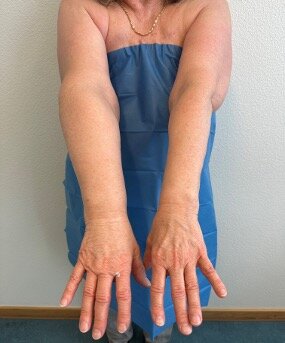Acute care providers face the challenging demands of varying shift work, which disrupts individual circadian rhythms and disturbs sleep regulation. Moreover, chronic sleep disturbance may affect cognitive performance, quality of life and both, mental and general health conditions. Therefore, it is essential to apply strategies to minimize negative effects of shift work.
Chronically poor sleep is not a minor issue, as disrupted sleep patterns can impair cognitive functioning, like decision making or other executive functions, emotional stability, and overall general health.1, 2 As shift work is very common in hospitals and acute care units, a significant number of health care providers are affected by disturbed sleep pattern. However, individual vulnerabilities to shift work vary widely and are influenced significantly by the individual chronotype.3 Therefore, this paper will provide targeted strategies for both employers and employees, ensuring the well-being of employees, their task performance as well as the security of their patients.
The principles of sleep regulation
In order to understand the mediators of sleep disturbance, one should take into account the principles of good, restorative sleep regulation: First of all, sleep is regulated by homeostasis. That means, sleep pressure increases the longer the individual is deprived of sleep. Hence, sleep quality improves when insomnia patients spend less time in bed, and only enter bed to sleep when sleep pressure is sufficient to fall asleep immediately. Second, sleep regulation follows a circadian rhythm. That means, that proneness to sleep increases with dusk at night and decreases with dawn in the morning, or with artificial light exposition. Accordingly, sleep propensity will be enhanced by avoiding bright light exposition. Third, the brain is very active during sleep, while oscillating between different states of brain activity. By means of sleep EEG five states of vigilance can be differentiated: a) Waketime, b) Rapid eye movement (REM) sleep with high frequency waves, characteristic rapid eye movements and muscle atonia, and c) three states of Non-REM-sleep: N1 is superficial sleep, N2 is stable sleep and N3 is deep, slow wave sleep. Though it is still not completely understood, what is essential for restorative sleep, it is assumed that the cyclic variation of these sleep stages is important. Physiologically, sleep starts with a cycle of NREM-Sleep, (N1-N2-N3-N2) while REM-sleep occurs not earlier than after 90 minutes at the end of the first NREM-sleep cycle. Over the night there will be 3 to 5 such cycles. The first half of the night is dominated by cycles containing N3-sleep, whereas the cycles of the second part of the night are dominated by REM-sleep but rarely N3 sleep. Physiologically, NREM sleep is associated with energy restoration, memory consolidation and cellular immunity processes, while REM-sleep is associated with dreams, processing of emotional memories and regulation of affectivity 4. To conclude, healthy sleep is expected to occur after more than 15 hours of active daytime life, at dusk and the beginning of dim light night-time and when the architecture of sleep can evolve without disruptions.
In the context of shift-work, it is the chronobiologic sleep regulation that will be challenged: The circadian rhythm follows an internal clock with a natural periodicity of slightly more than 24 hours' time. This inner clock regulates all physiological rhythms including wake-sleep-rhythms. To synchronize the inner clock with the outer day-night rhythm so-called “timer” (zeitgebers) are necessary. The most effective “timer” (zeitgeber) is bright light exposure. Via sensory cells in the retina the signal of light exposure is transferred to the suprachiasmatic nucleus (SCN). The SCN responds to external light cues, adjusting melatonin production and other hormonal outputs and synchronizes wakefulness-sleep rhythm with day-night rhythm.
For shift workers, who want to fall asleep after night shifts at daylight time, the exposure to the “timer” (zeitgeber) light before sleep disrupts natural rhythms, and results in inadequate suppression of melatonin secretion at sleep time with a reduced propensity to fall asleep. That means, that sleeping at daytime runs counter to the physiologic chronobiologic rhythm. While sleep homeostasis would enhance sleep in the morning after night-shift, day light would hamper sleep-onset. 3
The understanding of these mechanisms underscores the importance of structured and strategic sleep management for shift workers.
“Sleep deprivation adversely affects decision-making processes and judgement. In acute care settings, this can lead to errors and delayed response times.”
Sleep and Cognition, Consequences of Sleep Deprivation
Adequate sleep is not merely a physical necessity but also a demand for cognitive performance. For acute care professionals, vigilant attention, perception, reasoning and rational decision making may be an issue of quality of performance and patient security. Especially in high-performance acute care, the cognitive benefits of sufficient sleep shouldn't be neglected.
Sleep significantly impacts various aspects of brain function, including learning, memory consolidation, and problem-solving skills. During sleep, particularly in NREM N3 sleep, the brain processes and consolidates new information acquired during the day. This consolidation is vital for memory retention and learning new skills.6
Sleep deprivation adversely affects decision-making processes and judgement. In acute care settings, this can lead to errors and delayed response times. Sleep facilitates cognitive flexibility—the ability to adapt strategies based on new information, another crucial ability in the medical field.1
Disruptions in REM sleep, which are often experienced by shift workers, can lead to poor concentration, irritability and decreased coping abilities in high-stress medical environments.3 Furthermore, REM sleep is particularly crucial for maintenance of attention and concentration and the common disruptions in REM sleep among shift workers can result in attention lapses and reduced vigilance.1
The emotional burden on acute care professionals is intense and REM sleep also plays a critical role in emotion regulation by processing emotional experiences and reducing the emotional intensity of memories.2 Adequate REM sleep helps to buffer stress and anxiety, allowing healthcare workers to better cope with the psychological demands of their job.
“The emotional burden on acute care professionals is intense and REM sleep also plays a critical role in emotion regulation by processing emotional experiences and reducing the emotional intensity of memories.”
Health Risks Associated with Shift Work
Shift work disrupts the body's natural circadian rhythms, leading to a range of short-term discomforts and long-term health risks. The understanding of these risks can help institutions and individuals implement better health strategies. As shift work forces the body to operate contrary to its natural biological clock, it can lead to a condition known as shift work disorder. Symptoms include excessive sleepiness and insomnia, which can impair job performance and increase the risk of accidents.3, 7
Research has consistently shown that shift workers are at a higher risk for metabolic syndrome such as type 2 diabetes and obesity. These conditions are thought to arise from disrupted hormonal balances affecting appetite and metabolism, compounded by irregular eating times and the unavailability of healthy food during night hours. Furthermore, there is evidence for an association between shift work and increased rates of cardiovascular diseases. The irregular sleep patterns and potential for chronic sleep deprivation may contribute to arterial hypertension, increased stress hormone levels, and poor cholesterol profiles.3, 8
“The chronic disruption of the sleep-wake cycle could lead to significant reductions in brain function, affecting both professional performance and quality of life.”
Additionally, irregular schedules of shift work can also lead to significant mental health challenges, including a higher prevalence of mood and anxiety disorders. The social isolation related to working at night time can exacerbate feelings of loneliness and disconnection.9
There is also emerging evidence that long-term shift work may increase the risk of cognitive decline and memory impairment. Over time, the chronic disruption of the sleep-wake cycle could lead to significant reductions in brain function, affecting both professional performance and quality of life.20 Further, several studies have suggested a potential association between night shift work and an increased risk of certain types of cancer, notably breast and prostate cancer. 3, 11
Chronotypes and their Impact
Chronotypes refer to the natural inclination of individuals towards being more active and alert at certain times of the day, typically categorized into "morning larks," "night owls" and those in between. Chronotypes are genetically determined and cannot be adapted easily. 3
"Morning Larks" tend to wake up early, are most productive in the first part of the day and may struggle with late shifts or night work. In contrast, "night owls" are more alert during the evening and late night and can find early morning shifts particularly challenging. Intermediate types have a moderate preference and flexibility, adapting more easily to varying shift times.12
Aligning work schedules with the individual chronotype can lead to improved sleep quality, better work performance, and reduced health risks. 7
Different strategies may be used to manage diverse chronotypes in healthcare. If possible, employees could be allowed some degree of choice in their shift patterns to align more closely with their natural sleep preferences. Staff should further be educated on strategies to manage and mitigate the impacts of shift work, tailored to different chronotypes. Regular monitoring of health and well-being of shift workers, as well as interventions and support if signs of sleep disturbances or other health issues emerge, should further be provided.3
Strategies for Employers
Healthcare employers play a crucial role in mitigating the adverse effects of shift work. Implementing thoughtful strategies can help optimizing employee well-being and efficiency, which in turn benefits patient care.
Therefore shift scheduling should be optimized and - whenever possible - shifts should rotate forward (morning to evening to night) as this aligns more naturally with the human circadian rhythm and adaption is easier. The number of consecutive night shifts should be limited to reduce the accumulation of sleep debt and circadian disruption. For full recovery, the provision of adequate rest periods is important. Furthermore, for those who can tolerate them, consistent night shifts with a stable sleep schedule can be less disruptive than frequently rotating shifts. If significant limitations of sleep quality and sleep duration occur, affected employees should be given the possibility of working day shifts or continuous shifts until their remission.3
Relaxation rooms where employees can take breaks or naps in a comfortable setting can help to mitigate fatigue.3 Employers should offer education and counselling on sleep hygiene and strategies to cope with shift work, as well as regular health screenings, which can help identify and address sleep-related symptoms or other health problems early.3
To accommodate personal preferences and chronotypes as much as possible, employees should be involved in the scheduling process and feedback on shift work effects could be encouraged. Based on that feedback and the latest research, policies and practices may have to be adjusted.3, 12
In general, employers have a significant opportunity to positively impact the health and productivity of their workforce by adopting these strategies. By considering the human factors involved in shift work, healthcare institutions can create a more sustainable work environment that supports both staff welfare and patient care.
Light Exposure Management
Proper management of light exposure is essential for shift workers, particularly for those working night shifts, as it can significantly influence circadian rhythms and overall sleep quality.13 For example, exposure to bright, especially blue light, can help maintain alertness during night shifts. Bright lights in the workplace during the early part of the shift can mimic daytime, which can help reducing drowsiness. In contrast, bright sunlight on the way home after a night shift, should be avoided.3 Sunglasses may be worn if exposure is unavoidable to help prepare for sleep. Additionally, in the evening or before going to bed, blue light filters on electronic devices help to minimize blue light exposure, which can disrupt sleep by inhibiting melatonin production.7
Artificial light solutions can be helpful, as lamps or fixtures that allow for adjustable colour temperature can be used to create high blue light content during the start of the shift and warmer lights (lower blue light content) as the shift ends. Moreover, also reducing light intensity towards the end of a night shift can help signal to the body that it is time to wind down. The use of a bright light therapy box at specific times can be helpful to manage the circadian rhythm and may be used if someone needs to wake up in the middle of night for a shift, to trigger wakefulness.3 Consistent schedules are important here and light therapy should be used regularly before night shifts to help maintain a regular adjustment to the nocturnal schedule.7
Strategies for Employees
For healthcare professionals working shifts, especially in acute care settings, managing personal health and well-being is crucial.
Good sleep hygiene consists of habits and practices that are conducive to good sleep on a regular basis. For shift workers in healthcare, maintaining robust sleep hygiene is essential to combat the sleep disturbances that often come with irregular work schedules.
“For healthcare professionals working shifts, especially in acute care settings, managing personal health and well-being is crucial.”
It is important to go to bed and wake up at the same time every day according to shift schedules, as consistency helps regulate the individual sleep-wake cycle. A sleep-friendly environment that promotes relaxation should be created. This includes keeping the bedroom dark, quiet, cool, and free from electronic distractions. Further options may be blackout curtains, sound machines, and comfortable bedding to enhance sleep quality. To signal the organism that it is time to wind down, a pre-sleep routine can be helpful. This might include reading, taking a warm bath, or practicing relaxation exercises such as deep breathing or meditation.3, 7, 14
Additionally, heavy meals, caffeine, and alcohol should be avoided close to bedtime.14 Nutritious foods, such as whole grains, lean protein, and plenty of fruits and vegetables, help to sustain energy levels and promote better sleep. Eating at consistent times each day can further help to regulate the body clock.15
Besides, regular physical activity can also help to fall asleep faster and promote deeper sleep, however, vigorous exercise close to bedtime should be avoided as it can have the opposite effect.16 During long shifts, short breaks in order to walk or stretch can help maintaining alertness and reducing the negative effects of prolonged sitting. Furthermore, practices like yoga, meditation, and deep breathing can help to manage stress and improve sleep quality. Social support is another important factor, as maintaining social connections with family and friends is vital for mental health, especially when working at unconventional hours.3, 7
Naps can be beneficial for night shift workers, but they should be limited to about 20-30 minutes and not taken too close to the next sleep time. Longer naps can interfere with night time sleep. For night shifts, a short nap before the start of the shift can help to reduce sleepiness during the shift and planning an in-between nap based on the experience of maximum sleepiness during the shift can also be effective.7
Additionally, caffeine should be used strategically, as it can be a helpful alertness booster but it can also disrupt sleep if consumed close to bedtime.7
If possible, exposure to natural light during the waking hours helps maintain a healthy circadian rhythm, improving daytime alertness and promoting better sleep at night.8 Implementing these sleep hygiene practices can greatly benefit healthcare workers who struggle with sleep issues due to shift work. By fostering habits that promote restorative sleep, professionals can maintain their health and provide optimal care.14
Use of sleep enhancing agents
For health care providers, the strategic use of sleep enhancing-drugs can be part of managing sleep patterns disrupted by shift-work.
First of all, the substitution of melatonin, the physiological sleep enhancing hormone might be considered. For shift workers, supplementation of melatonin can help realign the body’s internal clock, especially when transitioning from day to night shifts or vice versa. The effectiveness of melatonin depends significantly on timing and it is recommended to take melatonin about 30 to 60 minutes before bedtime. Typical doses range from 0.5 to 5mg. Even if melatonin is considered safe for short-term use, it is wise to consult with a general practitioner or sleep specialist before starting.3
Additionally, caffeine is often used to promote alertness at the start of a shift or during a mid-shift slump. However, it should be avoided several hours before the end of the shift, not to interfere with subsequent sleep. What is more, while caffeine can be effective to manage alertness, use of high doses can lead to development of tolerance and later withdrawal symptoms, affecting sleep quality and overall health.3, 17
In some cases, shift workers may use hypnotics for short-term use, which can be effective for acute situations but are generally not recommended for long-term management due to risks of addiction and side effects. In addition, herbal supplements like valerian root and chamomile may be used to promote sleep. While they are considered safe, they should still be used with caution as they can interact with other medication.3
Using these substances strategically can support shift workers in managing sleep disruption and maintaining alertness when necessary, however, they should be integrated in a general concept of good sleep practices to maximize benefits.
Take Home Message – How to Find Sleep
Shift work, particularly in healthcare settings, poses significant challenges to maintaining regular sleep patterns and overall health. However, with the right strategies, healthcare professionals can mitigate these challenges and find restorative sleep that supports both their well-being and their capacity to care for patients. Key strategies for effective sleep management include the maintenance of a regular sleep schedule, the creation of a sleep-conducive environment, possibly an adjustment of the diet, the incorporation of regular physical activity, the prioritization of sleep hygiene, the strategic scheduling of light exposure or blue-light blockers and for short-term use melatonin, caffeine or hypnotics. In case of severe sleep disturbances, sleep specialists may be consulted for personalized strategies or exclusion of other sleep disorders.
- Kong J., Zhou L., Li X., Ren Q. Sleep disorders affect cognitive function in adults: an overview of systematic reviews and meta-analyses. Sleep Biol Rhythmus. 2023 Jan 12;21(2):133-142.
- Tempesta D., Socci V., De Gennaro L., Ferrara M. Sleep and emotional processing. Sleep Med Rev. 2018 Aug:40:183-195.
- Deutsche Gesellschaft für Arbeitsmedizin und Umweltmedizin (DGAUM). Leitline "Gesundheitliche Aspekte und Gestaltung von Nacht- und Schichtarbeit". 2020.
- Girardeau G. Lopes-Dos-Santos V. Brain neural patterns and the memory function of sleep. Science. 2021 Oct 29;374(6567):560-564.
- Schwartz W. J., Klerman E. B. Circadian Neurobiology and the Physiologic Regulation of Sleep and Wakefulness. Neurol Clin. 2019 Aug;37(3):475-486.
- Acosta M. T. [Sleep, memory and learning]. Medicina (B Aires). 2019:79 Suppl 3:29-32.
- Deutsche Gesellschaft für Schlaffforschung und Schlafmedizin (DGSM). Schlafprobleme bei Schichtarbeit. 2021.
- Vetter C., Dashti H. S., Lane J. M., Anderson S. G., Schernhammer E. S., Rutter M. K., Saxena R., Scheer F. A. J. L. Night Shift Work, Genetic Risk, and Type 2 Diabetes in the UK Biobank. Diabetes Care. 2018 Apr;41(4):762-769.
- Brown J. P., Martin D., Nagaria Z., Verceles A. C., Jobe S. L., Wickwire E. M. Mental Health Consequences of Shift Work: An Updated Review. Curr Psychiatry Rep. 2020 Jan 18;22(2):7.
- Leso V., Fontana L., Caturano A., Vetrani I., Fedele M., Iaviocoli I. Impact of Shift Work and Long Working Hours on Worker Cognitive Functions: Current Evidence and Future Research Needs. Int J Environ Res Public Health. 2021 Jun 17;18(12):6540.
- Kolstad H. A. Nightshift work and risk of breast cancer and other cancers -- a critical review of the epidemiologic evidence. Scand J Work Environ Health. 2008 Feb;34(1):5-22.
- Vetter C., Fischer D., Matera J. L., Roenneberg T. Aligning work and circadian time in shift workers improves sleep and reduces circadian disruption. Curr Biol. 2015 Mar 30;25(7):907-11.
- Tähkämö L., Partonen T. Pesonen A. Systematic review of light exposure impact on human circadian rhythm. Chronobiol Int. 2019 Feb;36(2):151-170.
- Booker L. A., Barnes M., Alvaro P. Collins A., Chai-Coetzer, McMahon, Lockley S. W., Rajaratnam S. M. W., Howard M. E., Sletten T. L. The role of sleep hygiene in the risk of Shift Work Disorder in nurses. Sleep. 2020 Feb 13;43(2):zsz228.
- Ferri G. M., Cavone D., Intranuovo G., Macinagrossa L. Healthy Diet and Reduction of Chronic Disease Risks of Night Shift Workers. Curr Med Chem. 2019;26(19):3521-3541.
- De Nys L., Anderson K., Ofosu E. F., Ryde G. C., Connelly J., Whittaker A. C. The effects of physical activity on cortisol and sleep: A systematic review and meta-analysis. Psychoneuroendocrinology. 2022 Sep:143:105843.
- Wesensten N. J., Killgore W. D. S., Balkin T. J. Performance and alertness effects of caffeine, dextroamphetamine, and modafinil during sleep deprivation. J Sleep Res. 2005 Sep;14(3):255-66.










